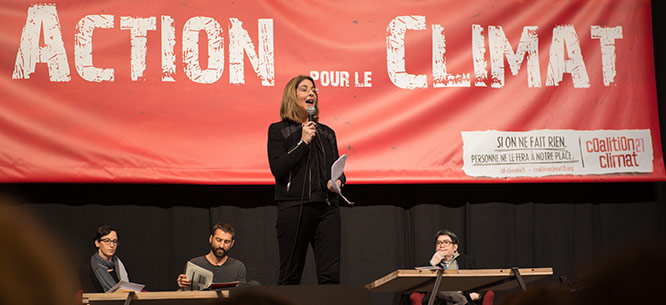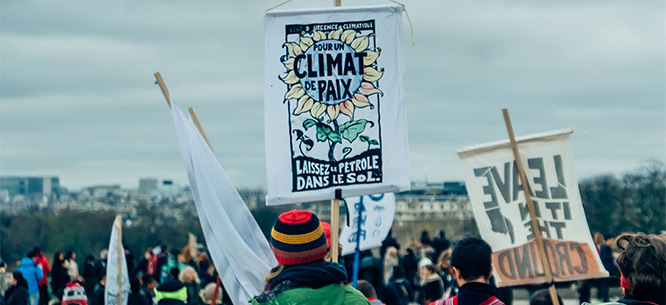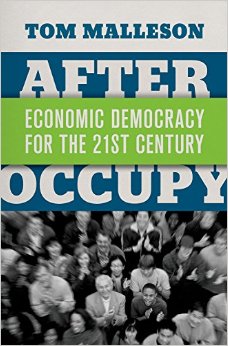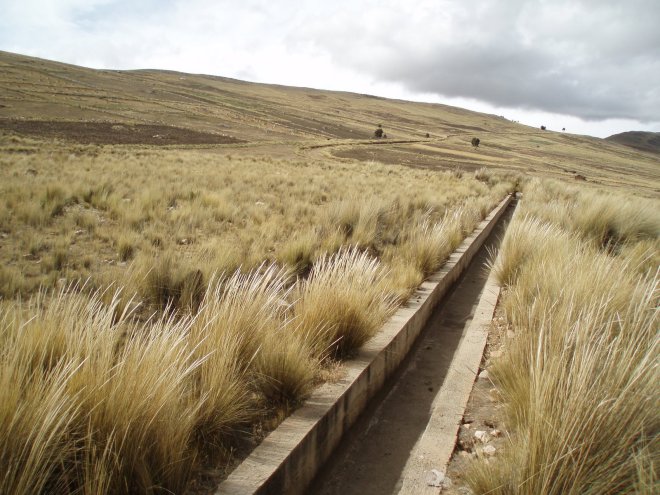
Daniel Aldana Cohen
ASA Panel: Moving Backward/Looking Forward: Crisis, Comparison, and History (organized by Mabel Brezerin)
August 9, 2021
I’m honored to be here. As someone who isn’t a historical sociologist at all, but who tries to think historically, I appreciate the chance to converse with such distinguished colleagues. What I lack in experience and expertise, I’ll try to make up for with provocation. After a bit of stage-setting, I’m going to argue that historical work in sociology can undertake an environmental turn in two ways—first, by reconstructing historical sociology in dialogue with environmental science, environmental history, and political ecology, among other fields; and second, by acknowledging—and returning to—the futurological character of many of the discipline’s founding thinkers.
As you can see, I’m going to take advantage of this somewhat informal format to make some general remarks.
Stage-setting. It’s far from obvious that mainstream sociological knowledge production—historical sociology included—has been adequately calibrated to speak to important 21st century developments. Take three examples: the rise of genetic engineering (and biotechnology more broadly), the explosion of artificial intelligence (and revolutions in computing power, more broadly), and the deepening climate emergency (and the broader ecological crisis, including the potential collapse of biodiversity).
Climate politics are my expertise. I’ll focus on those. Today, a new report was released by the Intergovernmental Panel on Climate Change. As you can imagine, I haven’t had a chance to read it; but I know there will be no surprises. All these reports are essentially the same. As one Guardian column was titled this morning, “The IPCC report is clear: nothing short of transforming society will avert catastrophe.” Transforming society. Shouldn’t that be our specialty? Shouldn’t historical sociology be the synthetic framework for linking environmental and social transformations?
Historical sociology could be an essential social scientific compliment to earth system science. As someone who has done a lot of work on Green New Deal policy, working closely with legislators in the “squad,” with the youth climate movement, and with other progressive groups, I can assure you that everyone is scrambling to find a theory of change that’s grounded in history. The IPCC knows many things—it does not know how massive social change happens.
It won’t be easy. The great climate journalist Elizabeth Kolbert has written that “Humans are producing no-analog climates, no-analog ecosystems, a whole no-analog future.” I think she’s right. We are facing unprecedented levels of migration, energy system change, extreme weather events, infrastructural disruption, agricultural change, and racial violence, to name a fraction of what’s coming. We have no precedent for a world in which a handful of molecules—greenhouse gases—become one of the most important causal factors shaping social life.
Carbon is the ultimate dependent, and the ultimate independent, variable.
And all this will occur in a world in which biology and computing are revolutionized, in which the most important capitalist entity will probably be the Chinese Communist Party, and in the context of countless other dynamics that have little to do with the histories and “social facts” of the United States and Western Europe.
The odds that postwar sociology’s customary categories and debates will explain 21st century social change… are low.
Even if the entire field of sociology were to undergo a Du Boisian turn and a decolonial turn tomorrow—and I would wholeheartedly support that—it would still need to undergo an intersecting environmental turn. I myself am in the early stages of a major research program on eco-apartheid. I’ll be developing theory; I’ve begun collaborative quantitative work; and I’m hoping to synthesize some of these currents of scholarship. One takeaway so far: The stories of power, inequality, and climate change are the same story—and they have been for centuries.
And looking forward, if sociology is in part defined as the social scientific domain that always focuses on inequality, then my friends, few things will transform inequalities like the impacts of climate change, reactions to climate change, and the trillions and trillions of dollars that will be invested to confront climate change.
So, what can historical sociological work do to inform scholars and publics?
First, I would argue that we should revisit our historical accounts in dialogue with environmental science. We need to do so in light of theories of racial capitalism and colonialism, and the global histories that this entails. I would also hope to see a kind of mash-up of historical sociology, environmental history, political ecology, and the natural sciences. In short—a systematic environmental turn in historical sociology. We should be thinking about the intersections of capitalist development, landscape transformation, social imaginaries, resource extraction, inequalities, social movement mobilization, and so on. Of course, we are catching glimpses of this already. And undoubtedly, a lot is happening that I don’t know about.
I do want to highlight in particular the work of Jason Moore, Raj Patel, Andreas Malm, Hillary Angelo, and before them Maria Mies and Immanuel Wallerstein, among many others. Broadly speaking, this is a current of scholarship that has understood the rise of capitalism as a fundamentally global phenomenon, taken account of its relationship to non-human natures, and treated inequalities of race, class, gender, and nation as key causes and consequences. I see this work as broadly consistent with the rise of new work on racial capitalism and colonialism, about which much has been said already during this ASA. In my view, Jason Moore and Raj Patel in particular have done extraordinary work in finessing an analytic framework that links the colonization of the Americas, the rise of capitalism, and the surge in greenhouse gas emissions from massive landscape transformation and fossil fuel use. And this work isn’t just additive: economy plus society plus nature. It is synthetic. Moore’s work especially offers a framework for understanding how economic accumulation required a combination of formal labor exploitation and the appropriation of unpaid work by slaves, women, and other indentured workers; how all this economic work required specific forms of scientific knowledge, from “race science” to more successful natural science, developed in the past several centuries; this work shows how increases in economic productivity were initially achieved before industrialization, in the contexts of European colonialism and slavery; and this early capitalism, in Moore et al’s telling, went on to define the use of fossil fuels starting in the 18th and 19th centuries. Now Moore may be wrong about a little or a lot. But the work of Moore, among others in this tradition, has the advantage of providing conceptually coherent frameworks, dialoging with historical work across fields, dialoguing with environmental science, and offering holistic accounts of how environmental destruction and modern inequalities are mutually productive. So there is, on the margins of our field, an environmental turn in historical sociology now underway.
And yet, remarkably, the best single synthesis I know of, that links this environmental historical work with cutting-edge earth system science is a book, The Human Planet, written by two well-read natural scientists, Simon Lewis and Mark Maslin. Lewis and Maslin have also shown, in Nature, that the first major human intervention in the chemical composition in the atmosphere was in the early 17th century, when the Americas witnessed a massive reforestation following the genocide of tens of millions of Indigenous people. That reforestation likely reduced the carbon dioxide concentration in the atmosphere by around 6 parts per million. This likely contributed to the Little Ice Age that historians in particular have recently analyzed.
Sociologists shouldn’t be getting upstaged by earth system scientists in providing synthetic, analytic, historical accounts that explain how changes in social structure drive changes in global ecology and vice versa, in a looping causal spiral.
I must also note that some currents of our environmental sociology subfield have also been doing similar work, often in the contexts of a broad research program on environmental injustice focussed on racial inequalities of power and health in the United States. Dorcetta Taylor has been rewriting American political and urban history in terms of a more expansive concept of racialized environmental politics. Kari Marie Norgaard is now linking environmental sociology to work on race formation and Indigenous studies. John Bellamy Foster, especially in his great work Marx’s Ecology, has shown that the materialist tradition of social science—Marx’s work especially—was based on continuous engagement with natural science. Marx was obsessed with soil science; he sent a copy of Das Kapital to Darwin. We could talk about Latour and Science and Technology Studies. All on the margins of mainstream sociology. How did this happen?
Riley Dunlap and William Catton argued in the late 1970s that sociology had fallen into the Durkheim trap of excluding the non-human natural world, in obeisance to the concept of “social facts.” In response, mainstream sociology ignored, downplayed, and marginalized the challenge. Until extremely recently, the sociology of climate change’s absence from the field’s top journals and departments has been… striking. Embarrassing, actually. Was the ASA so different from the oil companies that have worked to trivialize climate science since the early 1980s? Companies like Exxon and Shell had—on their own staff—scientists telling them that climate science was real and important as early as the late 1970s. Today, activists condemn the oil companies’ self-conscious science denial with phrases like #ExxonKnew. Could we not also say, #SociologyKnew? #ASAKnew?
So there are resources aplenty, in fact, in the world systems tradition, in the historical work focused on race and colonialism, in the various currents of environmental sociology, to inform a broad environmental turn in the historical sociologies of capitalism, colonialism, modernity, and the climate emergency. And if this were a much longer seminar, we could dig into all the ways that historical sociological theorizing on events, social movements, ideologies, etc etc, could be retooled as part of an environmental turn. So the point isn’t to burn everything that’s already been done.
Rather, just as decarbonization will require retrofitting all our existing buildings with new, healthy, all-electric systems, we need to retrofit historical sociology.
Let me turn very briefly to my second idea, which I develop in passing in my current book project, Street Fight: Climate Change and Inequality in the 21st Century City. In my terminology, this is “social backcasting.” I just leave that as a little label, which I’ll explain further another time.
In any case, my second idea is that we should recognize—and return to—the holistic futurological underpinnings of prior generations of social thinkers. This is a slightly more abstract form of environmental turn, and it applies equally to the study of other new forces that will transform social life, like genetics and artificial intelligence. Marx is the most obvious example. The capitalist world that he and Engels described in 1848 could have been written as a commentary on Charlie Chaplin’s Modern Times—a movie that came out almost a century later. Weber’s work was published decades before Kafka’s. And like all political economists, Marx was multi-disciplinary. And his materialism has inspired some of the most holistic, synthetic currents of sociology, history, anthropology, geography, sometimes even political science. Of course, the early 19th century social theorists, like Fourier and Saint Simon, are also of interest as holistic futurologists. As Krishan Kumar wrote decades ago, these thinkers theorized post-industrialism long before the development of the industrial revolution! They utterly scooped Daniel Bell and Alain Touraine (who mostly ignored their forerunners).
And speaking of Bell and Touraine—their theories of the post-industrial society may seem quaint today. But they were influential! Touraine’s whole concept of new social movements—which underlies almost all work on social movements to this today—flowed from his (deeply flawed) earlier work on post-industrialism. Or consider Mary Shelly’s Frankenstein, Fanon’s Wretched of the Earth, Henri Lefebrvre’s Urban Revolution, Du Bois’s Black Reconstruction—a book whose analysis of race and class explains the New Deal just as well as Ira Katznelson’s Fear Itself. All these signal works—and countless others could be included as well—all these works were partly charged by ideas about what lay ahead. Their expectations of the future utterly structured their theorizations of their past and present; for better and worse, our schools of social thought are almost all founded in futurological reason.
A historical sociology of social theory’s futurology might remind us that there is nothing new in reorienting sociological analysis around new developments, and adjacent forms of knowledge.
Let me end with a simple idea that exemplifies these arguments.
Imagine including summaries of the research of the Intergovernmental Panel on Climate Change in an introductory sociology syllabus—and in a historical sociology syllabus. This might seem weird. But think of the productive “breach” this could cause. In the wake of an IPCC report summary, one could read Shelly, Marx, Weber, Du Bois, and others, in terms of how they thought about the futures of science and capitalism. In the wake of an IPCC report summary, one would have to include texts on the relationship between resource extraction, inequalities, and the rise of racial capitalism, colonialism, “modernity,” etc. In the wake of reading an IPCC report summary, one might look to historical sociology for big stories about big social transformations that could guide our thinking and actions today.
Historical sociology needs to undertake an environmental turn. And the climate emergency would be easier to tackle if the public in general, and mobilized political actors in particular, had an adequately calibrated environmental, historical sociology to think with.









